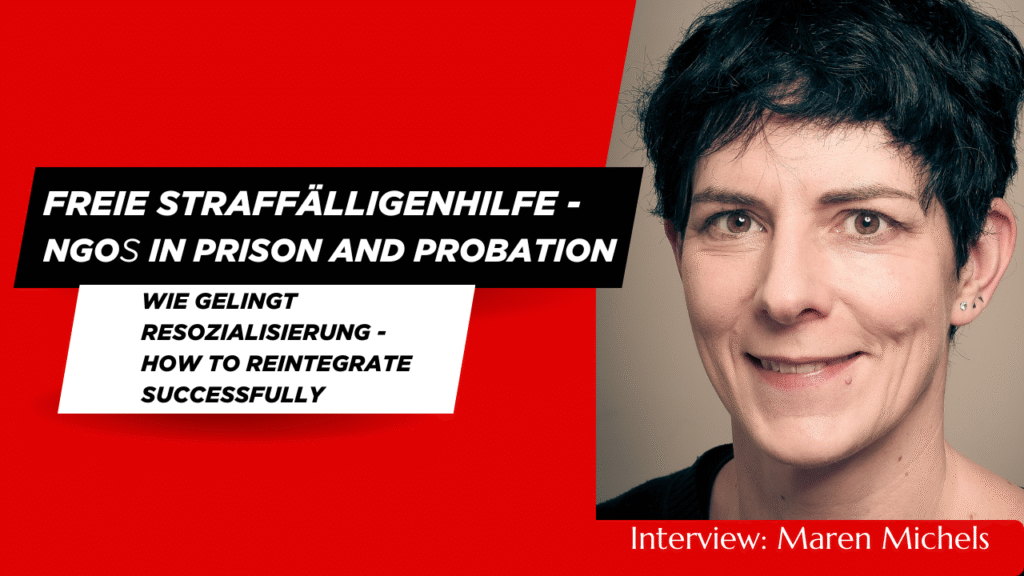Previous Article
News
Professionalising probation in Estonia
In a very short amount of time the Estonian probation service evolved into the organisation it is today. Director Maret Miljan wrote an article on how Estonian probation has changed over the past years.
The start of the Estonian probation supervision dates back to 1920, however the current supervision system started to function on the 1st of May 1998. The main goal was to have alternatives to prison, thus reducing the high prison population (280 prisoners per 100.000 people). Initially the responsible authority was the Estonian court, but in 2008 it was merged together with the prison service. The ideological idea behind this change was that the imprisonment and its alternatives would have the same purposes and principles and that the sentence enforcement process would be one logical chain in which prison and probation are just different phases. The method and process are also similar: same risk assessment tool, rehabilitation programmes etc. That is why it was decided to integrate probation into the prison service. With the result of more concentrated know-how and much more effective cooperation, thus enabling to save some resources. This was the start of professionalising probation in Estonia.
Risk assessment
First of all, probation serves a rehabilitative purpose. It is very important that all the interventions are aimed at factors that are known to be connected to criminal behavior. Therefore all interventions are preceded by a risk assessment. Since 2007, Estonia uses an OASys (Offender Assessment System) based tool. The purpose of a sentence is always punitive with the aim of public protection. There are regular meetings with a probation officer, home visits, alcohol and drug controls and contact moments about possible violations. In order to maintain a good quality of work, standardisation of the processes was needed and in 2011 the new national probation standard entered into force. This is a comprehensive guideline for the probation officers and is regularly updated.
As all the interventions and supervision activities should correspond to offender’s recidivism risk and the risk to harm, probationers are divided into 4 categories based on the Tiering-model. This change entered into force in 2014. The Tiering-model also corresponds to a workload counting system, whereas low-risk client are given one point by a probation officer, medium-risk two points, high-risk three points and very high-risk offenders four points. Per officer the optimum is 90 points, which for example might mean 30 high-risk clients for a probation officer simultaneously. The number of probationers (currently 4453) have been in decline in recent years, which enabled to keep the optimal workload. This is an important precondition to professional probation.
Probation studies
The work of the probation officer is to find out the risk of committing a new criminal offence and make a plan together with an ex-offender to set up means for avoiding this risk, while cooperating with the state and local government, structural units and non-profit associations and organising formal supervision as well. It is both a care and control oriented approach. As an entry requirement, a probation officer is expected to have higher education, a good stress tolerance and a high moral integrity. To manage all the tasks he/she should have an additional training on the topics of: client work skills, risk assessment skills, legal knowledge, technical skills for electronic monitoring or how to use breathalyzers or drug tests.
There is no university in Estonia that offers studies for probation officers and therefore there is a list of academic backgrounds that are suitable for the profession of probation officer (usually in the social field, but also in corrections and law). Estonia implemented a minimum standard for additional education depending on the study background (for example social workers lack the knowledge of law and lawyers miss the skills to work with clients). Since last year, the piloting of a preparation period for new probation officers has started. In the first six months, a new officer gets a supervisor and an individual plan for the trainings that are needed. This period ends with an examination to make sure the officer is suitable and ready for probation work. In addition to testing the fact based knowledge, there are also hypothetical case management problems that they need to solve. The idea behind this is to evaluate the values and attitudes of the future probation officers and not only focus on facts and skills.
Junior and senior probation officers
There are currently 165 probation officers in Estonia working at more than 30 locations that are divided between three regional prisons. This approach needs the centralisation of some tasks that probation fulfils. Probation officers should mainly focus on case management and that is why, since 2013, we have established the position of ‘junior officers’ that help with easier control and technical tasks. They are less qualified and act as a mobile unit that drives around the region conducting home visits and controlling alcohol and drug consumption according to the orders of the probation officers. The probation service is also responsible for rehabilitation interventions and there is either a central team in the region or senior probation officers who are conducting the group rehabilitation programmes. It is easier to have a group specialised officers than to teach a large amount of probation officers these skills. Senior officers are responsible for more difficult target groups (sex offenders, violent offenders, conditionally released prisoners etc). This is a way to balance the control versus care dilemmas that officers often have.
Cooperation
The probation system in Estonia could be considered as proactive. There was a great need for a systematic network for the high risk offenders and starting from 2014 Estonia implements a similar cooperation model to the UK´s MAPPA (Multi-Agency Public Protection Arrangements). The probation departement took the initiative to develop such a system and has the main responsibility to coordinate the cooperation between police, local government social workers, victim support etc. Another example is organising community service tasks. Usually the organisations providing these tasks are external institutes (like local governments or ngo-s), but it is not always easy to find reliable partners and control their work. Since 2015 the probation agency has legal options to organise community service by themselves. Usually the local government gives a location to use (for example a park) and junior officers coordinate the work done by the offenders there. Video surveillance can be used to make the control easier. This is also a good opportunity for the offenders that are sometimes rejected by outside partners because of their behavior or crime committed.
The Estonian probation system has changed a lot in the recent years. Usually the prison department within the Ministry of Justice is initiating the changes and regional prisons implement them. There is a locally elected board of probation officers that was established in 2012. It is re-elected every three years and it acts as advisory body to the ministry. This form of work helps to keep probation officers more involved into these processes and implement the changes into their everyday work.
The future
The challenges for the future will continue. For example, the balance in gender is uneven within the Estonian probation service and equality should therefore be achieved. At the moment almost 90% of the probation officers is female. The digital skills of probation officers have to be improved as well. We see that more experienced officers are usually very good at working with clients, but lack digital skills that might complicate the work with informational systems and also the control over the probationer on the internet (social media etc).

Related News
Keep up to date with the latest developments, stories, and updates on probation from across Europe and beyond. Find relevant news and insights shaping the field today.
Recap

CEP Events, Communication and Awareness-Raising
Recap: Conference on Public Perception of Probation
06/05/2025
From 6 to 7 May, the CEP Conference on the Public Perception of Probation in Europe took place in Antalya, Türkiye, bringing together over 100 participants from more than 20 countries. The event offered space for open discussion, exchange of experiences, and practical ideas on how probation is seen and supported across Europe.
New

Probation in Europe
New Interview Online with Felix Gerike, a survivor of a knife attack
01/05/2025
What do victims of violent crime need to recover—and what can be done to prevent such attacks?
In the latest episode of Division_Y, Jo Tein, CEP board member, speaks with Felix Gerike, a survivor of the 2023 Brokstedt knife attack in Germany. Felix played a crucial role in disarming the attacker, helping to prevent further harm. He shares his personal experience, reflections on victim support, and his views on justice and policy responses to violent crime.
Probation in Europe
New Executive Summaries for the report on Building Probation Capacity in Spanish and Italian
01/05/2025
Updated

CEP Board, Probation in Europe
New Interview Online: Maren Michels – The Role of NGOs in Probation
22/04/2025
In the newest Division_Y interview, Maren Michels, director of the Hamburg Welfare Association, shares her experiences and reflects on the vital role that NGOs play in supporting people during and after incarceration.
New

CEP Events
Want to Win a CEP Award? See How Finland Did It – Apply for 2025!
22/04/2025
We’re excited to share an exclusive interview with the winners of the Development of National Probation Services Award from the CEP Awards 2022:
The Prison and Probation Service of Finland.
New

Volunteers
International Day for Community Volunteers
17/04/2025
17 April – International Day for Community Volunteers!
Today, we celebrate the inaugural International Day for Community Volunteers Supporting Offender Reintegration—a day dedicated to acknowledging the vital contributions of volunteers who assist individuals in their journey back into society.
This initiative was launched during the 2nd World Congress for Community Volunteers, held alongside the 6th World Congress on Parole and Probation in The Hague (16–18 April 2024).
At CEP, we’re proud to support the official Declaration on the International Day for Community Volunteers. We’re also actively involved in the CoPPer project—a European initiative aimed at promoting community participation in probation services. CoPPer focuses on training volunteers to support individuals under supervision, helping them access education, employment, and community connections.
A heartfelt thank you to all the community volunteers out there—your dedication makes a real difference.
Subscribe to our bi-monthly email newsletter!
"*" indicates required fields
- Keep up to date with important probation developments and insights.

